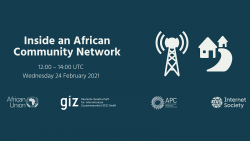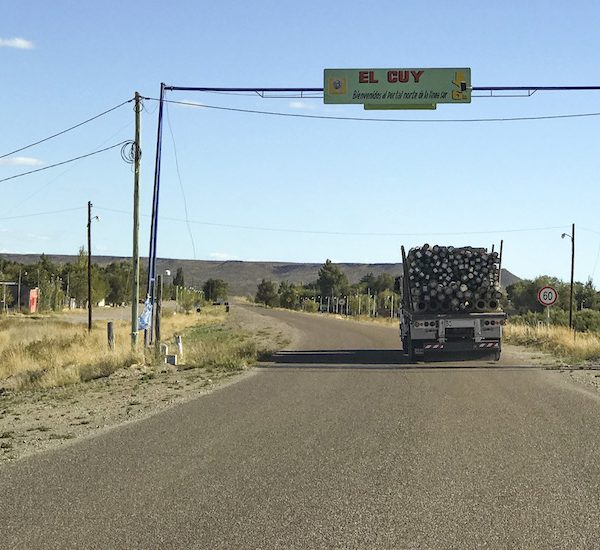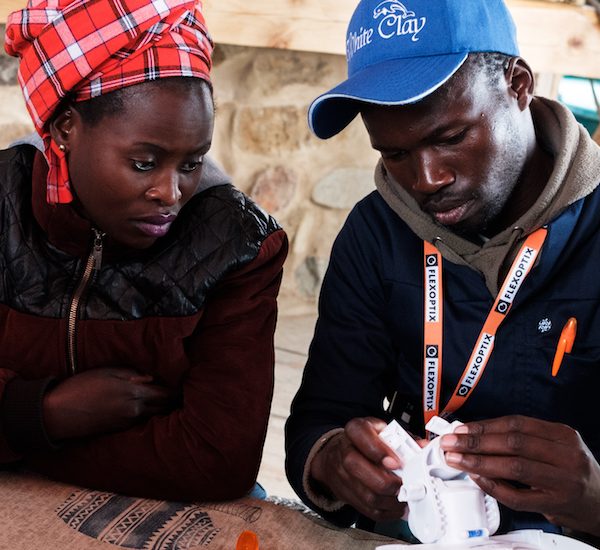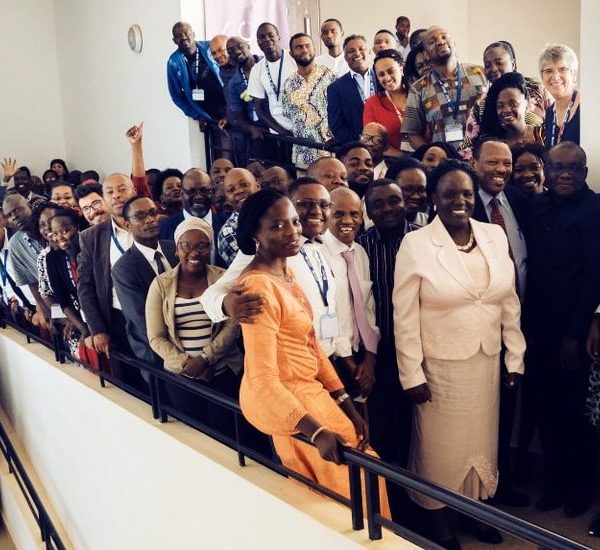Webinar Summary Report
The fifth session of the Virtual Summit on Community Networks in Africa took a deep dive inside the operations of an African community network (CN).
The session focused on two community networks: BOSCO Uganda, located in Northern Uganda, and PAMOJA Net, in Eastern Democratic Republic of Congo (DRC). They showcased their respective practical and technical approaches to connecting the unconnected to 129 people attending the session on Zoom and more on other livestream platforms.
About BOSCO Uganda
Battery Operated System for Community Outreach (BOSCO) Uganda is a not-for-profit, faith-based organization founded in 2007 under the trusteeship of the Catholic Archdiocese of Gulu district in Northern Uganda. It was established as a solution to get the voices of the people in Northern Uganda out to the rest of world through Information Communication Technology because the communities from the region felt isolated. With about six ICT centers at the beginning, BOSCO Uganda now has about 55 rural CN-based development centers with over 60,000 beneficiaries in Northern and West Nile regions in Uganda.
About Pamoja NET
In 2016, at the invitation of the Mwami (or King) on Idjwi, Ensemble began collaborating with local stakeholders to co-design and install the first Wi-Fi network in the Island of Idjwi, Pamoja Net. Its name, Pamoja, means “together” in Swahili and reflects its way of working. Over 3,900 people have now benefitted from free access to Pamoja Net. Research carried out by Ensemble revealed that 98% of users felt that it had contributed to a positive change in their lives from a newfound ability to connect with family and friends to conducting educational research, making job applications, and checking weather reports to fishing on Lake Kivu and saving money.
Panelists
- Ms. Jennifer Okusia, Executive Director, BOSCO Uganda
- Ms. Immaculate Laker, ICT Officer, BOSCO Uganda
- Mr. Fred Maziina, Connectivity Technician
- Okot Solomon Nono, BOSCO Uganda
- Mr. Ocan Moses Ethan, Solar Technician, BOSCO Uganda
- Daniel Komakech, BOSCO Uganda, ICT Program coordinator
- Alva-Ntyo Mihigo Herton, La Difference (PamojaNET Community Network)
- Chako Armant, La Difference (PamojaNET Community Network)
- Jean Louis Fendji, Senior Lecturer, University of Ngaoundere, Cameroon and Research Director, AfroLeadership was the moderator of the session.
Panel Discussion
The session was an interactive panel discussion where the two CNs had different speakers who provided deep insights into the day-to-day operations respectively.
The two community networks presented a series of short videos to expose participants to their respective:
- Technical operations
- Business models
- Governance structures
Technical Operations
The community networks showcased their technical operations and talked about the advantages of their choices of technologies and the challenges they face while implementing them.
BOSCO Uganda gave a guided virtual tour into how it converts Internet from fiber optics to the wireless technologies, how it distributes the wireless technologies, and how it uses solar energy to power its entire network and all its equipment at the different points.
BOSCO Uganda owns nine towers and shares four other towers, totaling 13 towers which it uses for transmissions and network connectivity to rural communities as far as 90 kilometers, 60km, 40km, 10km, and 5kms.
Pamoja Net, a community network in the Idjwi Island, east of DRC, Kivu region was one of the first public networks in the North and West. The Idjwi island, being surrounded by Kivu Lake, attracted little interest because of the heavy investments required to connect the communities. This prompted the development of Pamoja Net community network from the community level. It uses a point-to-point network, which links up the town of Bukavu and the Idjwi island, 63 kilometers apart. Both BOSCO Uganda and Pamoja Net use low-cost and locally available Wi-Fi equipment to implement point-to-point connections to reach the communities.
The panelists talked about the numerous challenges their networks encounter. Some of them include bad roads, mountainous topography, safety of equipment, and extreme weather conditions (very hot or very rainy seasons).
The Business Model
Presenters from BOSCO Uganda stated that the organization adopted solar power for its entire network and equipment because it found the model sustainable. One of its schools has a computer center which attracts about 100 users per day who access services such as IT training, printing, and Internet services. There is a Memorandum of Understanding (MOU) and a joint bank account managed by both the school management and BOSCO Uganda, which is signed by directors from both institutions.
Funds saved from what would have been paid for the national grid go to a joint account and are directed towards replacing equipment, supporting the maintenance of the network, and paying salaries for the technical staff who oversee the equipment, solar system, and the computer lab. BOSCO Uganda uses part of the saved funds to support other new energy projects.
Presenters from Pamoja Net said that they have local people who volunteer to offer services. Financial contributions from local businesses such as hotels and coffee farms on Idjwi island help to meet the financial costs linked to running the network. Other community members are able to have free access to the Internet from late afternoon. The community network also uses solar energy because of affordability.
Governance:
The governance structure of BOSCO Uganda comprises the board of directors who are appointed by the trusteeship of the archdiocese of Gulu. Among other roles, the board appoints the management and participates in monitoring and evaluation of the activities of BOSCO Uganda, while the role of management includes providing accountability of activities done on a quarterly basis.
BOSCO Uganda also works with partners, which it identifies through recommendations from local leadership and using an assessment tool designed by the organization. Capacity building, orientation, and signing of MoUs with community groups are some of the approaches that BOSCO Uganda uses to create ownership of the community centers.
In Idjwi, the Internet management is linked to the communities. Management committees are set up for every location where kiosks are created. Local people identify their community leaders.
Question and Answer Session
A question-and-answer session followed presentations by the two community networks. Some of the questions directed to the presenters, which were answered directly, include:
Are there telecom services in the locality where you provide your services? If so, what are the reasons people prefer your services over the telecoms in your locality? Directed at BOSCO Uganda.
Response: The telecom services are mainly in the urban settings. In hard-to-reach areas, telecom companies offer voice services and not Internet services. Most service providers avoid investing in poverty-stricken and low population areas because of the uncertainty of their investment returns. However, in addition to providing affordable Internet in the hard-to-reach areas, BOSCO Uganda offers intranet services where people are able to access content on education, agriculture, and even chat platforms between local communities.
What are your sources of finances for the community network?
Response: Our business model is based on contributions from businesses. We have established partnerships from organizations such as APC and Internet Society who provide support.
Conclusion
Sustainable community networks are built on good governance structures, sustainable business models, and right partnerships and operation structures, which must include communities.
The session was concluded with remarks from Mr. Michuki Mwangi, Senior Director of Internet Technology and Development at the Internet Society, who appreciated all organizers, sponsors, and participants for being a part of the webinar series. He discussed a poll, run during the session, that showed that interest in having monthly, bi-monthly, or quarterly events, and said that all suggestions would be discussed with communications made about the way forward to keep the community network communities engaged during the pandemic.
Written by Lillian Achom, Co-founder, AccessPlus and PC co-chair, Summit on Community Networks in Africa



